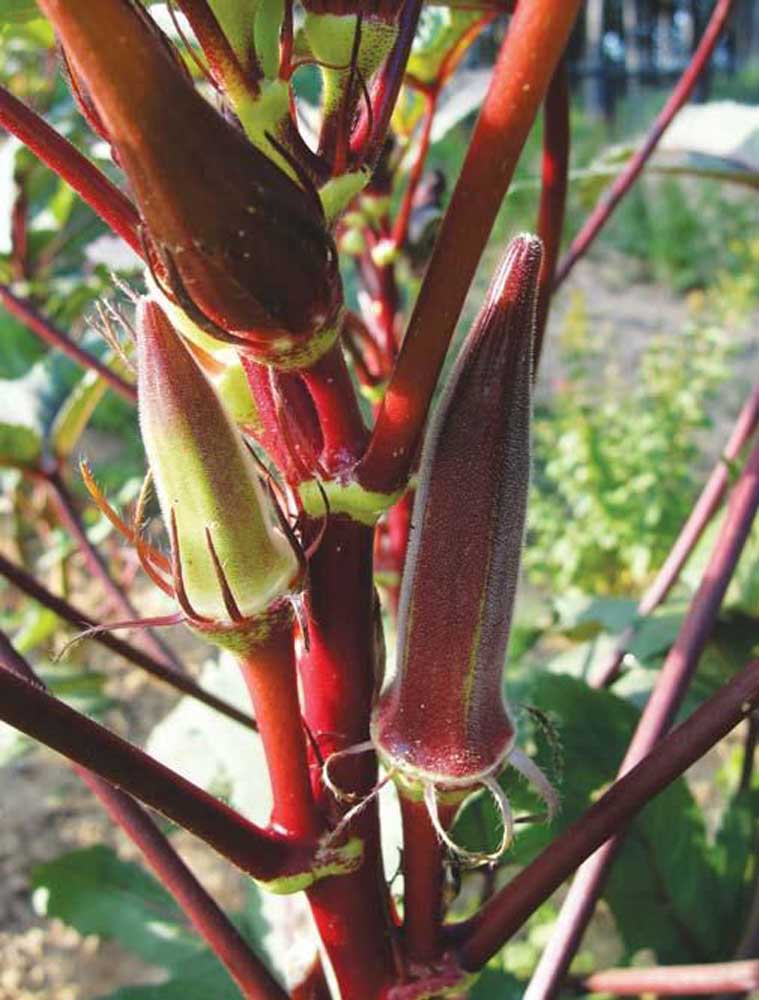Okra is a Southern garden staple
Published 5:10 am Thursday, May 10, 2018

- BURGUNDY OKRA grows in the garden. The pods should be harvested when they are 3 to 5 inches long and tender.
Introduced to the South with the slave trade, okra has become a huge part of Southern culture. It has been used as a thickening agent and table vegetable ever since.
The African name for okra was gumbo and subsequently gave us the name for the popular Creole soup. I grew up with okra and like it raw, boiled, fried, stewed and, of course, in gumbo.
Trending
Okra is a warm-season plant that cannot tolerate frosts, freezes or even cool nights. It thrives on heat, so it should be planted well after the last frost each year, generally April to May in East Texas. Okra is easily planted from seed. Soak it in warm water overnight to speed up the germination process. Once the seedlings are established and about 6 inches tall, thin them to 12 to 18 inches apart. Occasionally okra transplants are available, and they can be planted at the same spacing.
Okra needs at least eight hours of direct sun each day for maximum production. It isn’t picky about soils as long as they drain well. Due to a susceptibility to root knot nematodes, it is best to avoid areas where this has been a problem in the past or where okra was planted the previous year. It is ideal to till in several inches of compost or organic matter and incorporate 2 pounds of a complete lawn fertilizer (15-5-10, etc.) per 100 square feet of bed or every 35 feet of row before planting. For small plantings, use 2 teaspoons per square foot or foot of row. The ideal soil pH for growing okra is 6.0-7.0
Okra can be planted on flat ground or in raised beds or rows. The rows should be 6 to 8 inches high, 24 inches wide, and 36 to 48 inches apart. Using the corner of a hoe or a stick, open up a trench one-half to three-quarters of an inch deep and plant the okra seed at a rate of 4 to 5 per foot of row. Cover the seed lightly with well-cultivated soil and gently tamp down with the back of the hoe to conserve moisture and ensure good seed to soil contact.
Okra is easy to grow and relatively pest-free, however there are a few potential problems, including nematodes and fire ants. First, ants can inflict damage to the blooms, young pods and your hands. Treat the base of the plants and the mounds with an appropriately labeled pesticide when they occur. After thinning, lightly side-dress them with a high-nitrogen fertilizer, like 21-0-0.
Okra pods should be harvested when they are 3 to 5 inches long and tender. Sometimes they will snap from the plant, but I usually use a pair of hand pruners. Okra foliage irritates some gardeners’ skin, so you might want to wear a long-sleeve shirt. Okra needs to be harvested every other day to keep producing well. If the pods are left on the plant until they get tough and the seeds plump up, the entire plant will stop producing.
All okra varieties do well in East Texas, however Burgundy is my favorite. Burgundy okra turns green when you cook or pickle it. Okra is native to Africa.
Trending
Greg Grant is the Smith County horticulturist for the Texas A&M AgriLife Extension Service. You can follow him on Facebook at Greg Grant Gardens, read his “Greg’s Ramblings” blog at arborgate.com or read his “In Greg’s Garden” in each issue of Texas Gardener magazine (texasgardener.com). More gardening information from the Texas A&M AgriLife Extension Service can be found at aggie-horticulture.tamu.edu.






